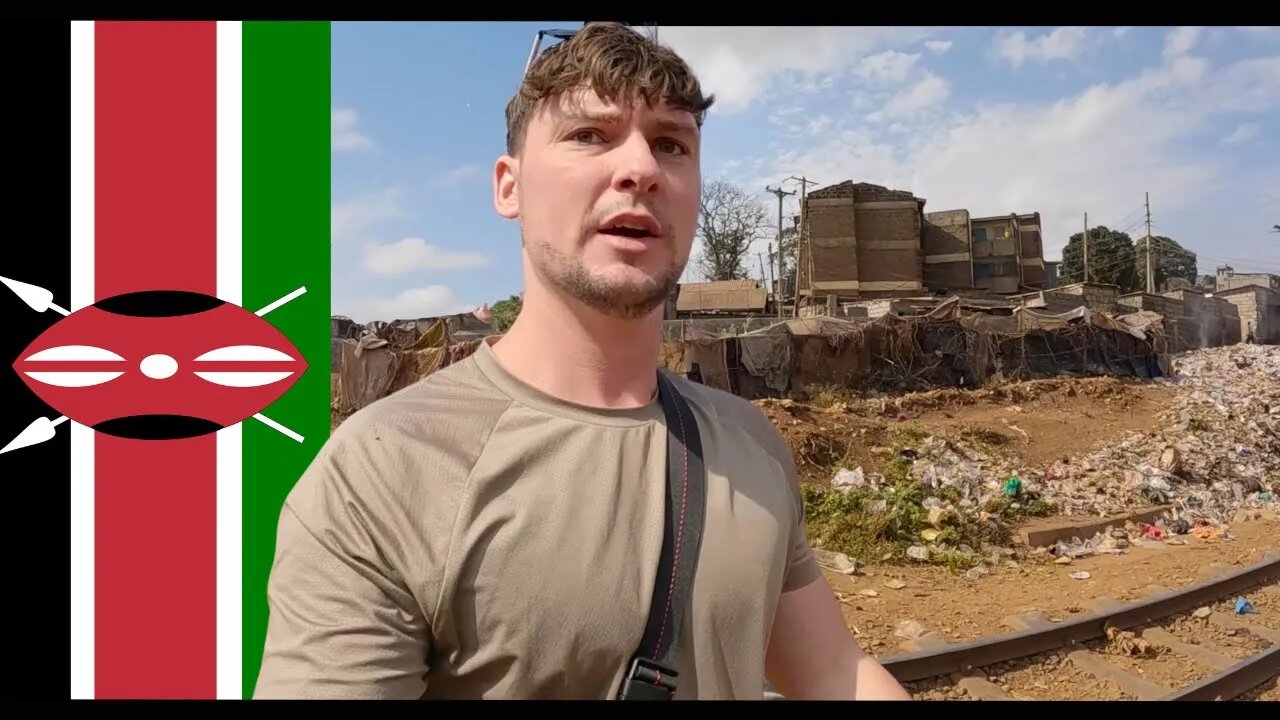Premium Only Content

Solo in Africa's Biggest Slum | Kibera 🇰🇪
In the late 1880s, Nubian soldiers from Sudan were incorporated into the British Army to fight in East Africa. The King’s African Rifles, as they would become known, were designated 4,000 acres of land to settle just outside of Nairobi, Kenya.
By 1915, the colonial government began categorising Kenyan tribes and settling them on “Native Reserves.” Nairobi was to be a European only settlements, and laws were passed restricted the natives from buying land in the highlands. The British intentionally classed the Nubians as a tribe not native to Kenya. Denied them a Native Reserve,
prior to Kenyan independence in 1963, no efforts were made by the British or the new Kenyan government to legitimise the Nubians as a recognised community in Kenya, and land rights to Kibera were not secured.
Upon independence, most Nubians became stateless. and the kibra was classified as an illegal settlement, removing the government from any obligation to provide even basic services in the region.
Population of Kibera at at independence was approximately 5000, but due to its proximity to Nairobi, Kibera became the go to destination for migrants fleeing rural poverty, ethnic conflicts and wars in neighbouring countries. By the turn of the century hundreds of thousands of people from all over Kenya and beyond called Kibera home.
Today there are anywhere between 250,000 and 1,200,000 people living in the biggest slum in Africa. Today I walked around, met incredible people and learned about the struggles and the mindset of the people who live here.
The quote was misattributed to Bob Marley. Actual quote is from Carter Goodwin Woodson, founder of the Association for study of African American Life and History.
For a tour of Kibera and elsewhere in Kenya contact Austin on instagram or via text:
Insta: @Austin Odhyse
Tel: (+254 (0) 713838823
-
 LIVE
LIVE
Vigilant News Network
7 hours agoDataRepublican Exposes the Shadow Government’s Darkest Secrets - Exclusive Interview | Media Blackout
1,774 watching -
 31:39
31:39
Peter Santenello
1 year agoStories From Vegas' Golden Era 🇺🇸
61.6K25 -
 LIVE
LIVE
The Why Files
11 hours agoLIVE: The Why Files 24/7 Stream n' Chat
1,284 watching -
 55:15
55:15
Russell Brand
1 day agoThe Truth About Big Pharma & COVID with Dr. Aseem Malhotra
174K10 -
 1:19:48
1:19:48
The Rubin Report
11 hours agoWhat the Trump Administration Must Do Instead of Revenge | Peter Thiel
131K168 -
 1:59:00
1:59:00
Steve-O's Wild Ride! Podcast
3 days ago $36.87 earnedPatrick Bet-David DESTROYS Steve-O's Dad - Wild Ride #252
150K50 -
![[XboxONE] GRINDING 1000g FC24](https://1a-1791.com/video/fwe1/01/s8/1/y/k/I/o/ykIoy.0kob-small-XboxONE-GRINDING-1000g-FC24.jpg) 3:29:15
3:29:15
deathbee
15 hours ago[XboxONE] GRINDING 1000g FC24
101K10 -
 1:08:32
1:08:32
Winston Marshall
1 day agoThe HIDDEN Agenda: Congresswoman Hageman UNCOVERS USAID Fraud, Censorship and Human Trafficking
128K143 -
 8:16
8:16
CarlCrusher
1 day agoThe True Story of Stranger Things and the Montauk Project Origins
78K26 -
 10:05
10:05
ariellescarcella
1 day agoNo, You're Not Having A 'Gender Crisis' You're Just Bored
79.6K62